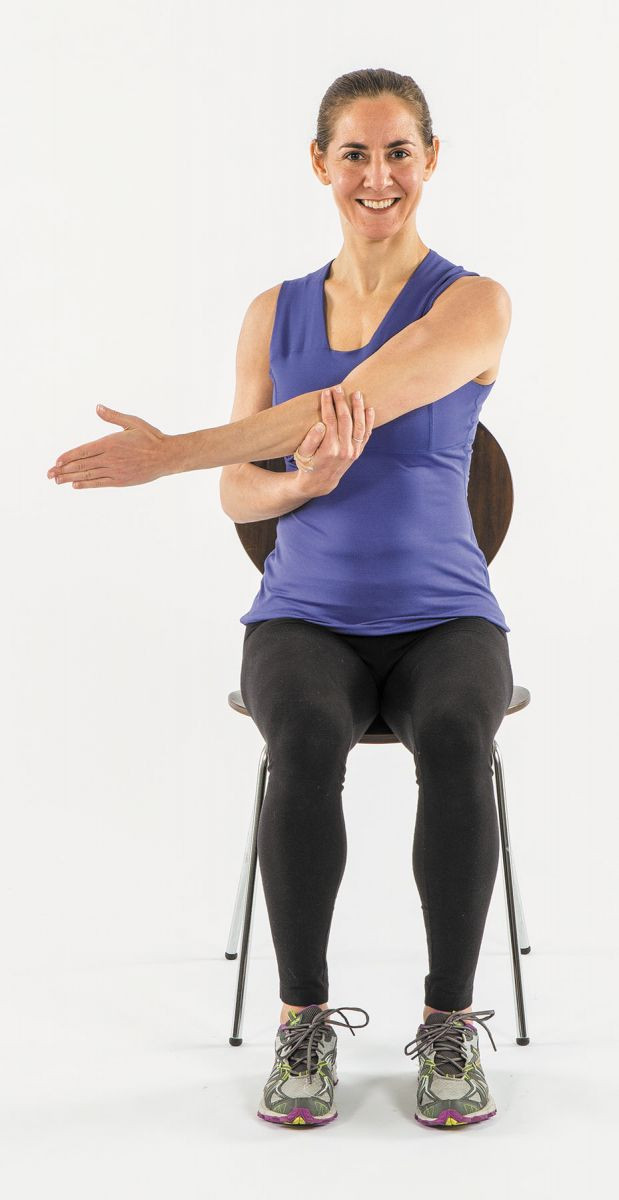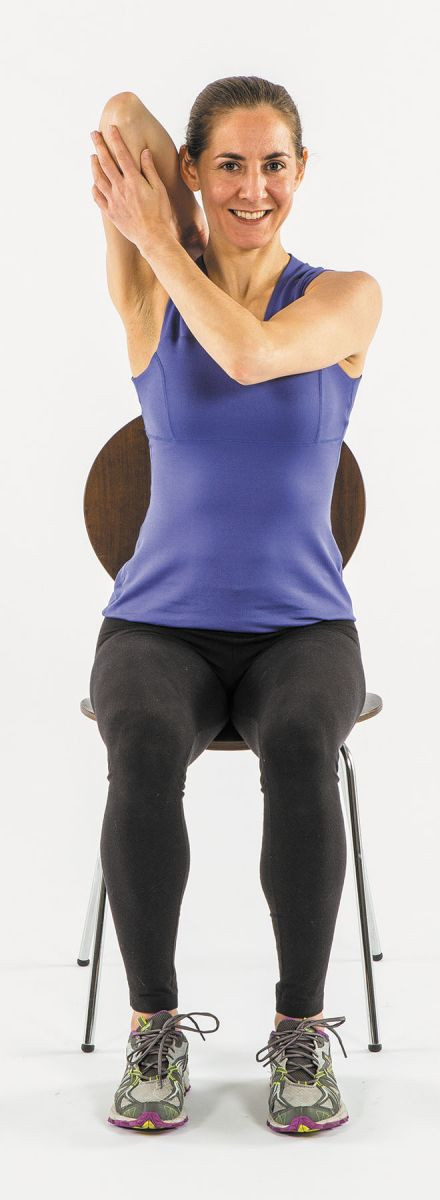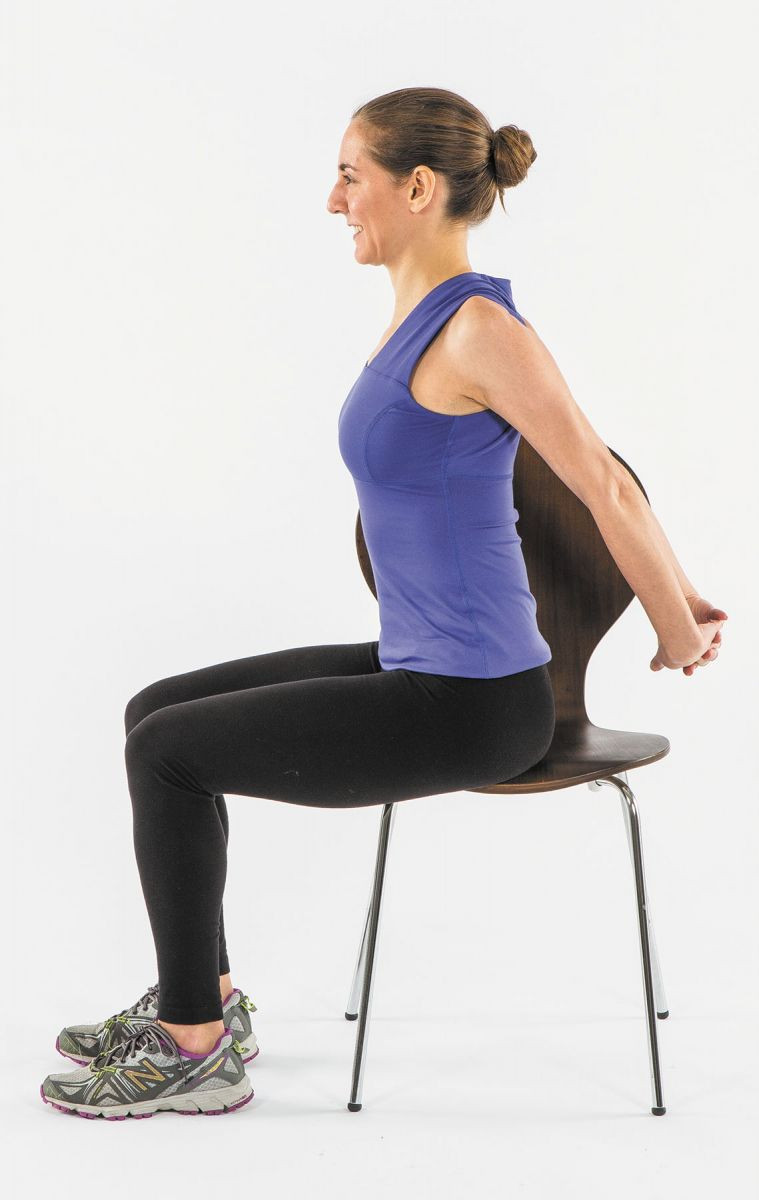Ouch! Shoulder pain and how to treat it
Some shoulder conditions may become more common as you age.

Image: © vitapix/Getty Images
You probably don't think about your shoulders much, until you suddenly experience pain in one of them. Shoulder pain can make a simple act — brushing and drying your hair, reaching behind your back to fasten a bra, or grabbing something overhead — seem like a monumental task.
As you age, you're more likely to experience shoulder pain from a variety of common conditions. The pain can come on gradually or abruptly, and it may range from mild to excruciating.
Below are some of the most common conditions you may encounter, and some tips for how to address them.
What to do if your shoulder hurtsIf you do experience shoulder pain, it's not always possible to figure out the cause. Sometimes problems in other parts of the body are actually the source of the pain, which then radiates to your shoulder. This can happen with certain neck problems, including arthritis and disc herniations. In general, if you are experiencing a lot of pain or know you injured yourself, it's best to see a doctor right away to have your shoulder condition diagnosed. But if you have general, mild shoulder pain, try adjusting your activities, taking acetaminophen or an over-the-counter nonsteroidal anti-inflammatory drug, and performing mild stretches to see if the pain improves on its own. However, if the pain is getting worse or doesn't go away after a few weeks, you should consult your doctor. |
Rotator cuff injuries and irritations
Your rotator cuff is a group of muscles and tendons that help tether your shoulder into the socket and allow you to move it in a circular motion. Some two million people visit a doctor each year for rotator cuff–related issues, according to the American Academy of Orthopedic Surgery (AAOS). Most problems with the rotator cuff fall into two categories: tears or inflammation. Suspect a rotator cuff problem if you have pain or stiffness in your shoulder when you lift your arm above your head to brush your hair or when you reach behind your back. You won't be able to do a lot of things you want to do, such as put dishes in an upper cabinet, play tennis, or do garden pruning.
Rotator cuff impingement. A rotator cuff impingement happens when there is irritation, inflammation, or compression of the tendons or bursa (the fluid-filled sac that sits between bones) in the shoulder. An impingement can be caused by an injury, but it can also just result from general wear and tear from daily life.
Rotator cuff tears. A tear in the rotator cuff will produce pain that is similar to an impingement but has one additional differentiating feature. If the pain is associated with weakness, it is likely caused by a tear, and if you just have pain, it may only be a rotator cuff impingement.
A tear can be partial, whereby only part of the tendon is ripped away from the bone it is attached to. Or there can be a full tear, causing the tendon to completely separate from the bone. Although younger people can have rotator cuff tears, they become more common as people age, possibly because the interface between the tendon and the bone weakens and becomes more susceptible to injury. The prevalence rises with each decade of life.
Compared with impingement, a tear is more likely to be caused by an injury. Common causes include falling on the ice, getting pulled by a dog on a leash, or tripping and landing on your shoulder. In other cases, problems crop up seemingly without cause. You might suddenly notice pain when lifting something over your head.
If you suspect a tear or are experiencing sudden pain from an injury, see a doctor right away, because you may need surgery to fix the problem. But if you aren't experiencing weakness and the pain is not severe, rest and anti-inflammatory medications may be enough to ease your discomfort.
Calcific tendinitis. With calcific tendinitis, calcium deposits get embedded within the rotator cuff tendons. While it's unclear exactly what causes these deposits to form, some experts believe they may result from a healing process in the ligament gone awry. The condition can cause severe pain that often starts in the morning. It's more common in middle-aged and older adults and those who have diabetes.
Treatment is aimed at relieving pain and preserving range of motion of the shoulder. Options include anti-inflammatory medications, corticosteroid injections, and physical therapy. If the pain is severe or persistent, your doctor may suggest surgery to remove the deposits.
Adhesive capsulitis. Commonly referred to as frozen shoulder, adhesive capsulitis is caused by a thickening and stiffening of the tissues around the shoulder joint. It typically develops in people ages 40 to 60. Frozen shoulder is more common in women than in men and in people with certain medical conditions, such as diabetes, high cholesterol, or thyroid disorders.
Frozen shoulder can occur after a rotator cuff impingement, a tendon tear, or even minor injury. But why some people go on to develop a frozen shoulder is not clear. Someone with shoulder pain may hesitate to move the arm as a result of those problems, which then leads to additional pain and stiffness. As a result, it may become virtually impossible to move the shoulder for weeks or months. The problem often goes away after a period of time — but that can take up to three years, according to the AAOS. Physical therapy is sometimes recommended for frozen shoulder. Other interventions include nonsteroidal anti-inflammatory drugs, corticosteroid injections, or, in some cases, surgery. But in most cases, it responds well to nonoperative treatment.
Osteoarthritis. When people think of osteoarthritis, they may think of the knee and the hip, which are common sites for arthritis pain. But while osteoarthritis affects the shoulder less often, it's not uncommon. The condition develops when cartilage cushions between the bones in the shoulder erode, causing the bones to rub against one another. There are numerous treatments for osteoarthritis, including rest, modifications to activities, anti-inflammatory drugs, corticosteroid injections, and surgery in some cases.
While you may be tempted to stop moving when you experience pain from osteoarthritis, doing so can actually make the problem worse because it allows the muscles to stiffen and shorten. This may ultimately make it even harder for you to move the way you want to.
Performing simple stretches two to three days a week (see "Simple shoulder stretch exercises") can help keep your muscles flexible and reduce pain, provided your doctor approves.
Simple shoulder stretch exercisesSeated shoulder stretch
Primarily stretches the shoulder Reps: 2–4Hold: 10–30 seconds Starting position: Sit up straight on a chair. Put your left hand on your right shoulder. Cup your left elbow with your right hand. Movement: Roll your shoulders down and back, then gently pull your left elbow across your chest as you extend your left arm. Feel the stretch in your left shoulder. Hold. Return to the starting position, then repeat on the opposite side. This is one rep. Seated triceps stretch
Primarily stretches the back of the upper arm and the shoulder Reps: 2–4Hold: 10–30 seconds Starting position: Sit up straight. Place your right hand on your right shoulder. Clasp your right elbow with your left hand. Movement: Keeping your shoulders down and back, lift your right elbow up toward the ceiling to the point of tightness. Feel the stretch in the back of your upper right arm and shoulder. Hold. Return to the starting position. Repeat on the other side. This is one rep. Seated chest stretch
Primarily stretches the chest and shoulders Reps: 2–4Hold: 10–30 seconds Starting position: Sit up straight facing sideways in a chair without arms. Movement: Roll your shoulders down and back. Clasp your hands behind you, intertwining your fingers so your palms face you. Gently lift your hands toward the ceiling to the point of tightness. Feel the stretch in the front of your shoulders and across your chest. Hold. Slowly return to the starting position. Exercise photos by Michael Carroll |
Disclaimer:
As a service to our readers, Harvard Health Publishing provides access to our library of archived content. Please note the date of last review or update on all articles.
No content on this site, regardless of date, should ever be used as a substitute for direct medical advice from your doctor or other qualified clinician.


















